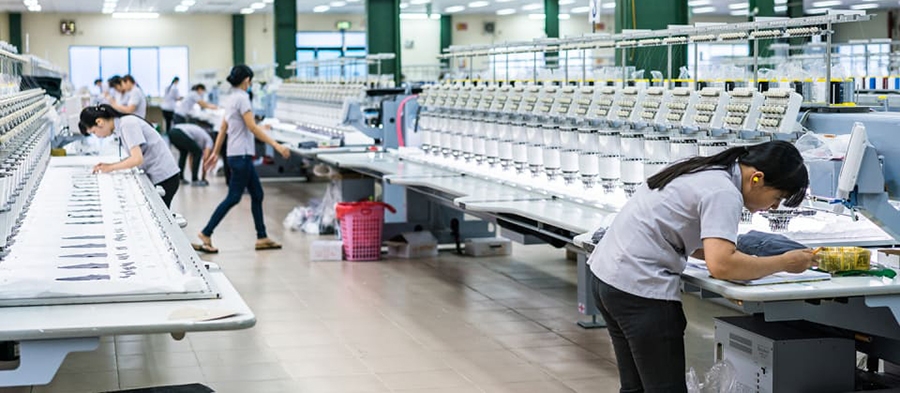First of all, from the perspective of macro data, Vietnam's foreign trade exports in March were US$34.1 billion, up 14.8% year-on-year; in the first quarter, exports were US$88.6 billion, up 12.9% year-on-year. But look carefully, although the export data is relatively large, but Vietnam's trade surplus in the first quarter was only 1.46 billion US dollars. In contrast, Vietnam’s imports of goods from China reached US$27.6 billion in the first quarter. By the end of the first quarter, Vietnam’s trade deficit with China was US$14 billion. That is to say, most of Vietnam’s foreign trade surplus was offset by imports from China.
The reason is that most of Vietnam's components and raw materials are still imported from China, and most of the companies transferred to Vietnam are from China. The low cost of labor and the risk of industrial decoupling between China and Western countries have also been successfully avoided.
From 2018, it is mainly related to consumer electronics companies such as Apple and Samsung. In recent years, the investment and production scale of Chinese enterprises in Vietnam have gradually increased. The epidemic management of China and Vietnam is not synchronized. When the epidemic in Vietnam was severe last year, China was better at controlling the epidemic. If a conglomerate has factories in both countries, it will make the domestic factories in China produce a little more. Vietnam is gradually returning to normal this year, and factories can produce as normal, so let Vietnamese factories produce more.
This effect is more obvious in the apparel industry. From the fourth quarter of 2021 to the first quarter of 2022, with the gradual restoration of Vietnam's production capacity, the share of clothing, footwear and hats imported from Vietnam by the United States has returned to the upward channel. The share of lamps/bedding rose by more than 8%. During the same period, the share of related commodities imported by the United States from China showed a significant downward trend, and the corresponding shares of clothing, shoes and hats all fell by 7% or more.
The same order transfer situation also occurs in the home furnishing industry. In 2019, the U.S. government imposed tariffs of up to 25% on almost all household categories in China. In this context, the entire Chinese foreign trade household industry began to shift to foreign countries. In 2020, Vietnam quickly overtook China as the largest home furnishing supplier to the United States.
In recent years, Chinese home furnishing companies such as Gujia Home Furnishings, Man Wah Holdings, Yongyi Co., Ltd., Meike Home Furnishings, Henglin Chair Industry, etc. have all opened factories in Southeast Asia. According to official statistics in Vietnam, one-third of foreign-invested home furnishing enterprises are relocated from China.
Chinese home furnishing giant Gujia has two factories in Mexico and two factories in Vietnam to meet the hot market demand in North America. The 2021 annual report shows that the company's domestic revenue is 10.71 billion yuan, a year-on-year increase of 40.1%; overseas revenue is 6.92 billion yuan, a year-on-year increase of 48.7%.
Another reason for Chinese manufacturers to move to Vietnam on a large scale is the product access and tariff advantages brought about by the free trade agreements between Vietnam and major economies. Among them, the EU-Vietnam Free Trade Agreement (EVFTA), which will take effect in 2020, will cut bilateral tariffs by 99% within ten years. In addition, under the framework of the Regional Comprehensive Economic Partnership (RCEP), Vietnam also has great access and tariff advantages for exporting to the US market.
The United States is the largest buyer of Vietnamese products, accounting for about 29% of Vietnam's total exports. About 33% of Vietnam's total imports come from the Chinese mainland. The imported goods are mainly textile materials and parts, 56% of textile and leather materials, 48% of machinery and equipment, 42% of telephones, mobile phones and parts are imported from China. After processing, about 63% of wood and products, 46% of textiles and clothing, and 42% of machinery and equipment are exported to the United States.

